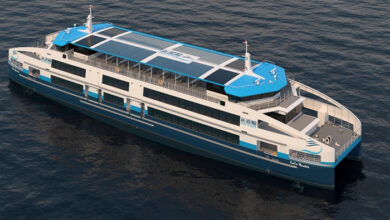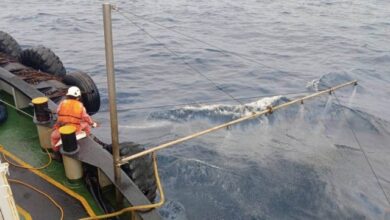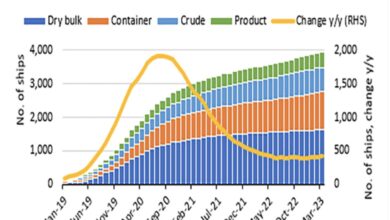Towboat pilot did not report $2 million bridge strike
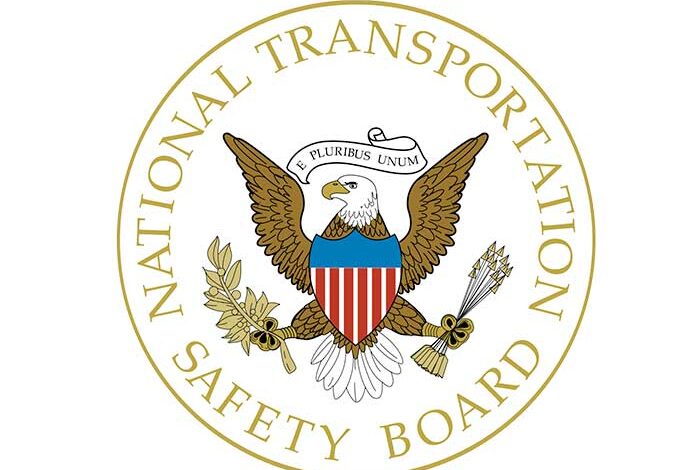
The National Transportation Safety Board has issued its report on a December 23, 2021, incident in which a barge tow struck a highway bridge. Though the bridge incurred $2 million in damage, the towboat pilot never reported the strike to authorities.
The accident occurred in the early morning hours. The 1961-built towing vessel Miss Mollye D, operated by Deloach Marine Services, was pushing six hopper barges on the Intracoastal Waterway to New Orleans when the pilot lost control of the tow. While navigating the channel, the 676 foot long tow, began to swing to port. When the pilot realized the tow was not positioned well, he put the engines in reverse. The tow then struck the bridge, which ran parallel to the waterway.
The pilot told investigators he initially did not see the bridge, nor did he know the tow struck the bridge.
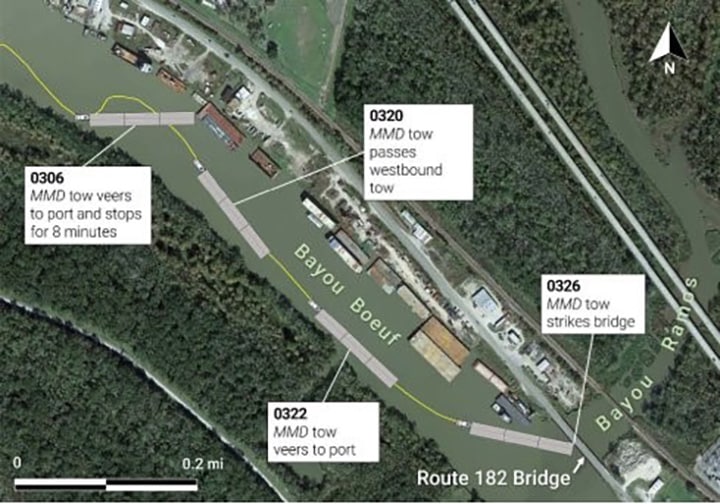
When the tow struck the bridge, water, electrical and gas lines along the bridge ruptured, triggering alarms at the utility providers. Workers sent to investigate found the bridge damaged and reported it to the U.S. Coast Guard.
Video from a forward-looking camera on the Miss Mollye D captured a vehicle passing over the bridge with visible lights before the contact. In addition, the sudden loss of speed and the visual indication of the barges pitching up would have been clear indicators of the bridge strike.
According to NTSB investigators, based on the evidence, it is apparent the pilot was aware the tow hit the bridge, but he did not report the strike to the relief captain or to the U.S. Coast Guard. Federal regulations require the operator of a vessel involved in an unintended bridge strike to immediately notify the nearest U.S. Coast Guard office.
The bridge, which does not cross a navigable waterway, was closed to traffic following the contact. The south lane of the bridge remained closed until repairs could be made. Repairs to the bridge were estimated at $2 million. No injuries were reported.
The bridge could have failed or severed gas and electric lines could have ignited a fire in the time between the striking and the finding of the damage.
“This casualty underscores the importance of reporting bridge strikes and other casualties immediately after they occur,” the report said. “Traffic over the bridge was not stopped until the utility workers found the damage, hours after the casualty occurred.”
IMPAIRMENT FACTORS
The NTSB determined the probable cause of the contact of the Miss Mollye D tow with the Route 182 bridge was a loss of control of the tow by the pilot at the helm of the towing vessel, likely due to impairment by factors such as fatigue or drug use.
According to the full NTSB report, “the tow’s veering to port when it stopped in the channel just after 0300 and when it struck the bridge at 0326 could not be explained by machinery issues, external forces, or distraction of the pilot. The crew reported no issues with steering or propulsion systems, and current and wind conditions were benign. The pilot stated that he did not use the two cell phones in the wheelhouse during the watch, and records for the phones confirmed no activity. While the pilot may have been fixated on the weather report just before the casualty, this does not explain the first instance of the tow veering to port, nor does it explain why he did not correct the tow’s course before looking at the weather report.”
“A more likely explanation of the vessel’s erratic movement and the towboat pilot’s actions before and after the casualty is impairment,” says the fulls NTSB report. “Possible causes of impairment include fatigue or drug use. The pilot and relief captain were standing watch on a 6-hours-on, 6-hours-off basis. Research has shown that this watch rotation leads to shorter sleep durations, more frequent nodding off on watch, and more instances of excessive sleepiness when compared to a 4-hours-on, 8-hours-off watch rotation. In addition, the casualty occurred during a time period considered to be a circadian low (roughly 0200– 0600), when the body is normally more fatigued and prone to diminished alertness and degraded performance. A person who is fatigued is prone to episodes of microsleep, a brief period of sleep lasting less than 15 seconds. The International Maritime Organization notes that, ‘during microsleep, the brain disengages from the environment (it stops processing visual information and sounds).’ Although the pilot told investigators that he did not fall asleep, it is possible for a person to experience microsleep without recognition that it has happened. However, because there were no other crewmembers in the Miss Mollye D wheelhouse during the events preceding the casualty, the impact of fatigue could not be conclusively determined.
“The pilot submitted to a urinalysis on the afternoon of the casualty, and the results were negative for all tested-for drugs. Methamphetamines were screened in the test, and therefore it is unlikely that the pilot was impaired by that drug at the time of the contact with the bridge. However, the urinalysis did not test for buprenorphine or fentanyl, and hair-sample testing conducted 5 weeks after the casualty indicated that the pilot used these drugs at some point in the preceding 1–2 months. Buprenorphine [used to ease withdrawal from opioids such as fentanyl] causes mental and physical impairment, and fentanyl causes confusion, drowsiness, and dizziness. While the use of either of these drugs could have caused the pilot to be impaired, the specific timing of the drug use could not be determined by the hair sample test.”
There’s much more on this topic in the toxicology section of the full report.
- You can read the full report HERE









